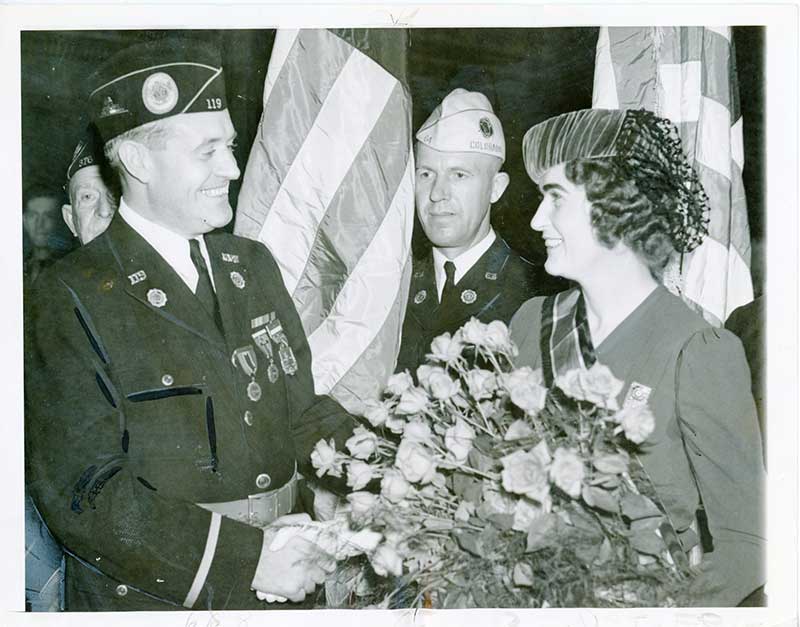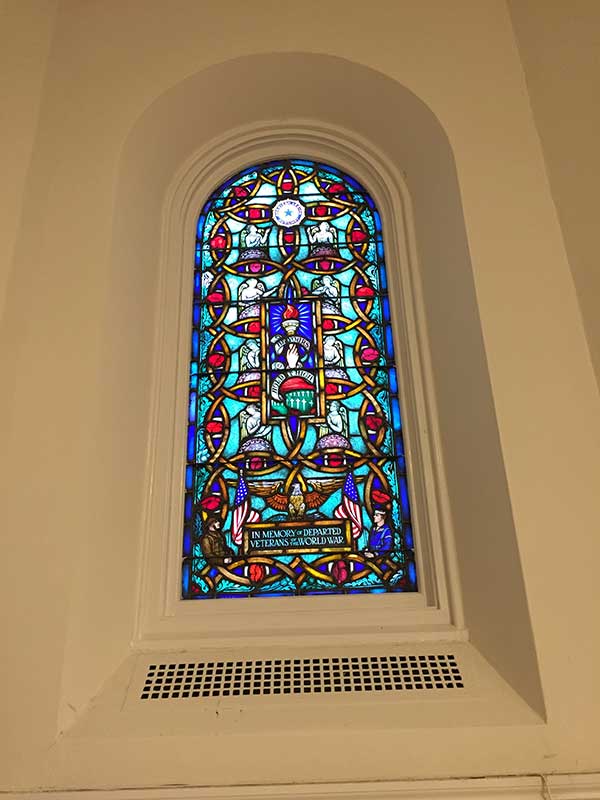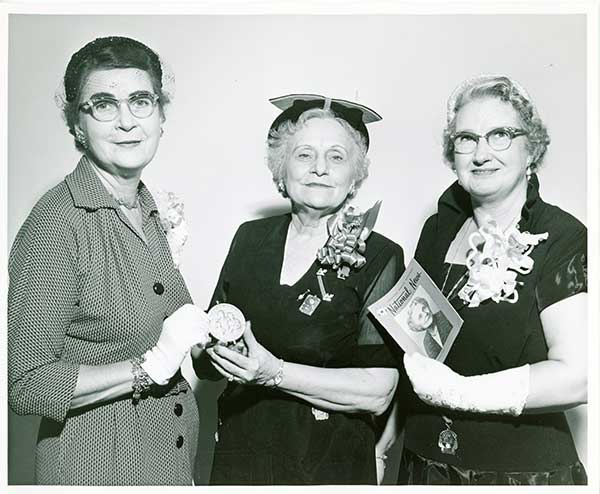
By Cathi Taylor, ALA National Headquarters Archivist
At the end of last month’s history blog post, Doris Corwith was coming to the end of her four-year stint as the ALA national Radio Committee chair. During those years, she traveled to many departments (states) educating puzzled radio chairs, arranging broadcasts, and publicizing the ALA’s programs, but her traveling days were far from over.
It was the last few days of September 1939 when the National Convention got underway in the windy city of Chicago. Normally, convention time is one of enjoyment and addressing the business of a national organization.
But this one was unlike any previous convention as the world began to realize the Great War failed to end all wars. For on the first day of that month, at 4:43 a.m., Germany invaded Poland. England and France immediately declared war against Germany while the United States avowed neutrality. Americans — including The American Legion Family — were divided. While some pressed to enter the war, many sided with President Roosevelt. And that was the stance the Legion Family took.
It was in this environment that Corwith became the 19th ALA national president, defeating Katherine J. Miller of Kansas and Annatellie Rarey of Ohio.
Though the year remained cloaked in a shroud of a world war, it was marked with some stellar ALA accomplishments: new libraries and an educational project in the Civil Conservation Camps (CCC) across America; in excess of $900,000 spent in the rehabilitation program, nearly $1 million on child welfare activities, and the distribution of roughly 12 million poppies on Poppy Day.

Photo courtesy of Arlington National Cemetery.
Corwith traveled to every state in the union – to Hawaii where she made a radio broadcast to the mainland from Honolulu; to Alaska where she was the first Legion Family national officer to visit every post in the territory; to Panama on a Boeing 314 Clipper, a long-range flying boat; and she paid a visit to ALA units in Cuba. And ALA members at home traveled right along with her through a new addition to the ALA National News magazine, “Personal from the National President.”
There was the Legion Family project – one that didn’t come to fruition until Corwith had turned the presidency over to her successor. Two stained glass windows were installed in the chapel at Fort Myer next to Arlington National Cemetery. The chapel was built with a center window of Tiffany glass; however, the two side windows were plain. Because the chapel at the time was holding 600 or more funerals a year, the Legion Family determined it was only fitting to replace the plain windows with commemorative stained glass windows. Corwith assisted with the design and commemorative legend. They were installed in November 1940.
When her year as national president was finished, Corwith returned home to Long Island – not to rest, but to make an idea of hers come to fruition – help people understand what radio was trying to give them, be aware of available programs, and understand how the system of broadcasting worked. By May 1941, Corwith convinced the National Broadcasting Company (NBC) to give this idea a six-month trial. She stayed about 17 years.
 Corwith began her new career as an assistant to the public service counselor, traveling coast to coast, spreading the word about radio – its role in the past, the present, the future, and bringing back to NBC the public’s expressed wants from radio.
Corwith began her new career as an assistant to the public service counselor, traveling coast to coast, spreading the word about radio – its role in the past, the present, the future, and bringing back to NBC the public’s expressed wants from radio.
She traveled at a dizzying pace, speaking to high school and college groups, various clubs and organizations, as well as ALA departments, units, and communities. In an interview given circa 1947, Corwith admitted to working well into the night when in town and giving as many as three talks a day plus radio interviews when on the road.
But radio wasn’t her only topic. There was national defense, Americanism, education, free speech, and children’s relationship with radio. After Pearl Harbor, Corwith added a new one — that everyone needed to do their part for the war effort, mincing no words that there was no room for apathy.
"Now is the time to break down all barriers between organizations. No longer are we Elks, Masons, Eagles, etc. We are all Americans and we must be awake to the great danger ahead. We must be awake to the fact that this will be a long war. Liberty is no longer something that is passed from father to son. Liberty is now a precious thing that must be fought for. We mustn’t think that this is something that will be over in 1942. If we do, we will be licked. We must change from a country of pacifists to a nation with but one objective, to win the war."
Corwith rose up through the ranks of NBC, from assistant to supervisor to producer, being a member of the original production staff of Meet the Press. And the ALA was with her on every step of the journey, even presenting her with Golden Mike Awards for various NBC programs. She:

And in October 1954, Corwith was honored by the Veterans Administration for “outstanding service to U.S. veterans through the media of radio and television.
You would be amazed where Corwith’s name shows up in a Google search. Naturally, there’s the NBC archives, but also various university archives, the Library of Congress, the Legion Digital Archive, the Broadcast Pioneers History Project in the Old Time Radio Researchers archives, and in The Papers of Eleanor Roosevelt from the Franklin D. Roosevelt Library.
Joe Hayes of the Star-Gazette in Elmira, N.Y. wrote a tribute to Corwith in May 1973, a month after her passing, relaying an account of when a former department commander from New York was mentioned as a candidate for the office of governor. Corwith was his choice as a running mate. “Political big-shots threw up their hands and exclaimed, ‘A woman lieutenant governor!’…In his own quiet way, Brother Bennett said, ‘Not just a woman – a brilliant lady.’”
I couldn’t agree more.
ALA Digital Archive Collection
To learn more about the history of the American Legion Auxiliary, please visit our digital archive collection at https://alaforveterans.pastperfectonline.com.